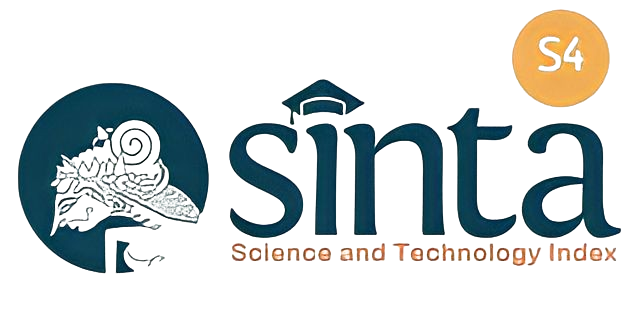Kontribusi Instrumen Perbankan Syariah terhadap Pertumbuhan Ekonomi Indonesia Tahun 2005-2021
DOI:
https://doi.org/10.14421/jmes.2022.011-02Keywords:
TPF, Financing, Total assets, Economic growth, VECMAbstract
This research aims to analyze the role of Islamic banks in economic growth. The writing of this research is motivated by the rapid development of Islamic banking in Indonesia which needs to be balanced with its contribution to economic growth. This research is based on research questions about the development of Islamic banks in Indonesia, and the contribution of Islamic banks to Indonesia's economic growth before and during this pandemic, through third party financing, financing, and Islamic bank assets in the Indonesian economy. The method used in this study is quantitative by analyzing secondary data processed by Eviews 10 using the VECM method and using quarterly time series data from 2005 to 2021. The results of the study using the VECM method show that Islamic bank third party funds have a positive effect, total bank assets Sharia has a negative effect, and financing has no long-term or short-term effect on economic growth. Based on tests conducted by IRF, the movement of economic growth in response to the shock of these variables has been volatile for the next 60 years. This means that Islamic banks play an important role in Indonesia's economic growth. The proposed solution is for Islamic banks to increase market share, increase the proportion of funding from the Mudharabah and Musyarakah programs, tighten regulations, improve quality and quantity, and keep up with technological advances.
Downloads
 Abstract viewed: 735 times
|
Abstract viewed: 735 times
|
 PDF downloaded = 822 times
PDF downloaded = 822 times
References
Abduh, M., & Azmi Omar, M. (2012). Islamic banking and economic growth: the Indonesian experience. International Journal of Islamic and Middle Eastern Finance and Management, 5(1), 35–47. https://doi.org/10.1108/17538391211216811
Abduh, M., & Chowdhury, N. (2012). Does islamic banking matter for economic growth in bangladesh. Journal of Islamic Economics, Banking and Finance, 8, 104–113. http://ibtra.com/pdf/journal/v8_n3_article6.pdf
Ayyubi, S. El, Anggraeni, L., & Mahiswari, A. D. (2017). The effect of islamic banking to economic growth in Indonesia. Jurnal Al- Muzara’ah, 5(2), 88–106.
Basuki, A. T. (2018). Aplikasi model var dan vecm dalam ekonomi. Fakultas Ekonomi UMY, 1, 1–41.
Bist, J. P. (2018). Financial development and economic growth: evidence from a panel of 16 african and non-african low-income countries. Cogent Economics and Finance, 6, 1–17.
Caporale, G. M., & Helmi, M. H. (2018). Islamic banking, credit, and economic growth: some empirical evidence. International Journal of Finance and Economics, 23(4), 456–477. https://doi.org/10.1002/ijfe.1632
Deti, S., Samin, S., Amiruddin, A., & Salenda, K. (2017). Kontribusi perbankan syariah terhadap pertumbuhan ekonomi di Kabupaten Sambas. Jurnal Diskursus Islam, 5(2), 261–282. https://doi.org/10.24252/jdi.v5i2.7046
Ductor, L., & Grechyna, D. (2015). Financial development, real sector, and economic growth. International Review of Economics and Finance, 37, 393–405. https://doi.org/10.1016/j.iref.2015.01.001
Fauzi, A. (2019). Hubungan kausalitas sukuk negara (SBSN) dengan pertumbuhan ekonomi di Indonesia dan Malaysia. Universitas Islam Negeri Sunan Kalijaga.
Goldsmith, R. W. (1969). Financial structure and development. Yale University Pers.
Gurley. J. G, & Shaw, E. S. (1960). Money in a theory of finance. The Brookings Institution.
Hayati, S. R. (2014). Peran perbankan syariah terhadap pertembuhan ekonomi Indonesia. Equilibrium, 4(1), 41–66.
Herwartz, H., & Walle, Y. M. (2014). Determinants of the link between financial and economic development: Evidence from a functional coefficient model. Economic Modelling, 37, 417–427. https://doi.org/10.1016/j.econmod.2013.11.029
Jhingan, M. L. (2007). Ekonomi pembangunan dan perekonomian. Raja Grafindo Persada.
Kassim, S. (2016). Islamic finance and economic growth: The Malaysian experience. Global Finance Journal, 30, 66–76. https://doi.org/10.1016/j.gfj.2015.11.007
King, R. G., & Levine, R. (1993). Finance and growth: schumpeter Mmght be right. The Quarterly Journal of Economics, 108(3), 717–737.
Levine, R. (2005). Finance and growth: theory and evidence. Handbook of Economic Growth, 1, 866–934.
McKinnon, & Shaw. (1993). Money and capital in economic development. Brookings Institution Washington.
Mifrahi, M. N., & Tohirin, A. (2020). How does islamic banking support economics growth? Share: Jurnal Ekonomi Dan Keuangan Islam, 9(1), 72–91. https://doi.org/10.22373/share.v9i1.6882
Rama, A. (2013). Perbankan syariah dan pertumbuhan ekonomi Indonesia. Signifikan: Jurnal Ilmu Ekonomi, 2(1). https://doi.org/10.15408/sjie.v2i1.2372
Rizki, M. P., & Fakhrudin. (2015). Intermediasi perbankan syariah terhadap pertumbuhan ekonomi Indonesia. Jurnal Ekonomi Dan Kebijakan Publik Indonesia, 2(1), 42–55.
Salman, A., & Nawaz, H. (2018). Islamic financial system and conventional banking: A comparison. Arab Economic and Business Journal, 13(2), 155–167. https://doi.org/10.1016/j.aebj.2018.09.003
Sasana, H., Ramdani, D., & Novitaningtyas, I. (2020). An empirical analysis of the impact of islamic banking on real output in Indonesia. Economica: Jurnal Ekonomi Islam, 11(2), 329–345. https://doi.org/10.21580/economica.2020.11.2.4079
Sekaran, U., & Bougie, R. (2018). Research methods for business (seventh). John Wiley & Sons.
Siregar, H. A., & Suryani, F. (2022). The effect of sharia banking financial performance on the MSME productivity. Procuratio: Jurnal Ilmiah Manajemen, 10(1), 105–117.
Sugiyono. (2019). Metode penelitian kuantitatif, kualitatif R&D. Alfabeta.
Sukirno, S. (2010). Makroekonomi modern: perkembangan pemikiran dari klasik hingga keynesian baru. Raja Grafindo Pustaka.
Sukmana, R., & Kassim, S. H. (2010). Roles of the Islamic banks in the monetary transmission process in Malaysia. International Journal of Islamic and Middle Eastern Finance and Management, 3(1), 7–19. https://doi.org/10.1108/17538391011033834
Tabash, I. M., & Dhankar, S. R. (2013). An empirical analysis of the flow of islamic banking and economic growth in Bahrain. International Journal of Management Sciences and Business Research, 3(1), 96–103. http://connection.ebscohost.com/c/articles/94410849/empirical-analysis-flow-islamic-banking-economic-growth-bahrain
Todaro, M. P., & Smith, S. C. (2011). Pembangunan ekonomi di dunia ketiga (eleventh). Addison-Wesley.
Todaro, M., & Smith, S. C. (2011). Chapter 5: poverty, inequality and development. In Economic Development.
Utami, H. W. (2018). Analisa pengaruh sektor perbankan terhadap pertumbuhan ekonomi Indonesia periode 2001 – 2015. Oeconomicus Journal of Economics, 4(2), 1–17.
Widarjono, A. (2018). Ekonometrika pengantar dan aplikasi disertai panduan eviews. UPP STIM YKPN.
Yusof, R. M., & Bahlous, M. (2013). Islamic banking and economic growth in GCC and East Asia countries: A panel cointegration analysis. , 4(2), 151-172. Journal of Islamic Accounting and Business Research, 4(2), 151–172. https://doi.org/10.1108.JIABR-07-2012-0044











